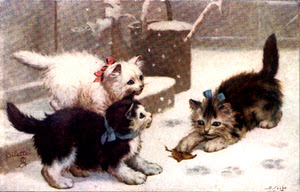Let's look at why kindergarten reading lessons are so important to 1st grade reading success.
What are the kindergarten reading lessons?
1. Listen to stories, then discuss the elements: story sequence, the start, middle, and end of the story; did surprises happened in the story; who were the characters, what details were connected to the various characters - drawing pictures of these story aspects is helpful.
2. Getting comfortable and skillful with a pencil. Arm, hand, and finger muscles must slowly learn to control tiny movements. Finger-plays and drawing shapes are helpful activities.
3. The child's eyes must begin to see the tiny differences between letters e, c, M, N, etc. Puzzles, finding animal shapes hidden in pictures, and finding matching shapes are helpful.
4. Gradually learn the name, shape, and sound of the 52 letters of the alphabet, 26 letter pairs.
Ignore backward letters; they will not slow your child's reading progress, are rarely dyslexia, and will self-correct by mid-2nd Grade. However, the correct direction of lower-case b, d, g, p, q is critical. Be sure your child can identitfy b /d and p / q / g within words when your child starts 1st Grade. Target these letters one at a time. Look for b at the start, middle, and end of words while reading stories. Then d, etc. Parents must pay attention; children "fall through the cracks" at school. Your child will know the name and sound but can get confused by b / d and p / q / g when these letters are combined with other letters - in words - when your child starts reading. Take action to correct that problem.
Why? Because the brain anticipates which information it needs to retrieve from memory.
The eye actually sees which letters are coming up. When the 1st Grade child's eye sees a letter b coming up and the child's mind is unsure whether the letter is a b or d - problems begin.
What are the kindergarten reading lessons?
1. Listen to stories, then discuss the elements: story sequence, the start, middle, and end of the story; did surprises happened in the story; who were the characters, what details were connected to the various characters - drawing pictures of these story aspects is helpful.
2. Getting comfortable and skillful with a pencil. Arm, hand, and finger muscles must slowly learn to control tiny movements. Finger-plays and drawing shapes are helpful activities.
3. The child's eyes must begin to see the tiny differences between letters e, c, M, N, etc. Puzzles, finding animal shapes hidden in pictures, and finding matching shapes are helpful.
4. Gradually learn the name, shape, and sound of the 52 letters of the alphabet, 26 letter pairs.
Ignore backward letters; they will not slow your child's reading progress, are rarely dyslexia, and will self-correct by mid-2nd Grade. However, the correct direction of lower-case b, d, g, p, q is critical. Be sure your child can identitfy b /d and p / q / g within words when your child starts 1st Grade. Target these letters one at a time. Look for b at the start, middle, and end of words while reading stories. Then d, etc. Parents must pay attention; children "fall through the cracks" at school. Your child will know the name and sound but can get confused by b / d and p / q / g when these letters are combined with other letters - in words - when your child starts reading. Take action to correct that problem.
Why? Because the brain anticipates which information it needs to retrieve from memory.
The eye actually sees which letters are coming up. When the 1st Grade child's eye sees a letter b coming up and the child's mind is unsure whether the letter is a b or d - problems begin.
I use ebay as my website. Search Instant Reading Help, all my books will pop up. My books, (Panda cover and Giraffe cover) give you specific language to make sure your child has control of these crucial letters when your child is trying to read on his own and you are not nearby to help. All books include my contact info; email or call for help.
Write with questions. Thank you, Mary Maisner
















